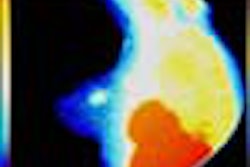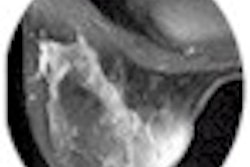New breast imaging techniques such as full-field digital mammography (FFDM) may show promise, but film-screen mammography (FSM) remains the gold standard for now, according to a report issued today by the Institute of Medicine (IOM) and National Research Council of the National Academies.
The report, called Mammography and Beyond: Developing Technologies for the Early Detection of Breast Cancer, is the work of a 16-member multidisciplinary committee including experts in breast cancer, medical imaging, cancer biology, epidemiology, economics, and technology assessment.
Established by IOM in 1999, the committee on technologies for the early detection of breast cancer evaluates state-of the art methods, investigates developing technologies, and examines how these new methods are adopted into clinical practice.
The IOM committee studied a range of new imaging modalities and tools, including FFDM, ultrasound, MRI, computer-aided detection, scintimammography, and PET, as well as technologies not yet approved by the Food and Drug Administration for breast imaging, such as optical imaging.
"Several show promise as adjuncts to mammography, but to date, none have been proved to be superior to conventional mammography for routine screening," according to Dr. Joyce Lashof, chair of the IOM committee and professor emerita at the School of Public Health, University of California, Berkeley.
"Ultrasound and MRI can aid in diagnosis, and be of value in screening selected groups of women. Digital mammography offers technical advantages but has not yet been shown to be more accurate than film mammography," Lashof said.
For example, in a large-scale study presented by the U.S. Department of Defense at the 2000 RSNA meeting, 6,678 women were screened using FFDM and FSM, with 51 confirmed cancers found, according to the IOM report. Both FFDM and FSM detected 18 cancers. FFDM detected nine and 16 were found with FSM.
"The study did not indicate that there was an improvement in detection rate; (FFDM) was not statistically different from film-screen," said Dr. Janet Baum, a committee member and director of breast imaging at Beth Israel Deaconess Medical Center in Boston. "There were other advantages to digital mammography, including technical advantages such as image retrieval, image storage, image transmission, and the potential to use digital images more easily in computer-aided detection systems."
Another study evaluating the use of MRI for screening applications in a small group of patients is underway, but has not generated any data as of yet, Baum said.
New technologies
Many other technologies are in relatively early stages of development and more research is needed to assess their accuracy and effectiveness, Lashof said. Traditional imaging methods identified cancers based on structural abnormalities, but some of the newer methods attempt to identify biological changes as well.
In addition, many non-imaging technologies are being developed that also show potential for diagnostic screening applications, such as the latest advances in molecular biological technology, which can provide information about the genetic and cellular characteristics of abnormalities, she said.
"We believe that improving our understanding of the basic biology of breast cancer is a crucial step in overcoming the problems of overdiagnosis and overtreatment of cancer screening," Lashof said.
Technical improvements in breast imaging techniques have led to an increase in the rate of detection of small lesions, such as ductal carcinoma in situ (DCIS), the biology of which is not well understood, Lashof said.
"Currently, the methods for classification of such lesions detected by mammography are based on the appearance of the tissue structure, and the ability to determine their lethal potential is crude at best," she said. "The committee recognized the need for research on the progression of breast cancer to more clearly define the significance of early lesions and the need to develop bio markers."
The committee also recommended actions to overcome barriers to the development and dissemination of new detection technologies.
However, to ensure that technologies approved for diagnosis are not mistakenly deployed in screening applications, the committee recommended that FDA approval and insurance coverage of new screening approaches be based on a more systematic approach. This would involve clinical trials that are coordinated and designed with support and input from relevant federal agencies and breast cancer advocacy organizations.
Private insurance firms also can contribute to this cause by covering the costs of women who participate in these screening trials but who are not eligible for Medicare and Medicaid, Lashof said.
Because detection technologies and treatments are constantly evolving, the National Cancer Institute (NCI) should sponsor clinical trials every 10 to 15 years to reassess the effectiveness of established screening tools. The NCI should also sponsor further research on the benefits of screening mammography for women over the age of 70, Lashof said.
"As the age distribution of the U.S. population continues to shift towards older ages, the question of whether these women benefit from screening mammography will become increasingly important," Lashof said.
FDA and HCFA involvement
The low reimbursement rate for mammography has drawn concern that patient access to screening facilities may be in jeopardy. The Health Care Financing Administration (HCFA) and a panel of independent experts should analyze the current Medicare and Medicaid reimbursement rates for mammography and comparable radiological techniques to determine if the cost is adequately covered, Lashof said.
The committee also recommended those federal agencies and professional organizations assess the supply of breast imaging specialists and take measures to ensure an appropriate number of these experts.
The FDA was included in a few of the committee's recommendations. Among other tasks, FDA guidance documents for vendors on the determination of the "safety and effectiveness" of the devices, especially with regard to clinical data, should be articulated more clearly and applied more uniformly, according to the committee.
In addition, the committee believes the FDA advisory panels could be improved by including more experts in biostatistics, technology assessment, and epidemiology.
The committee also recommended that if a new device approved for diagnostic use shows potential for use as a screening tool, an investigational device exemption (IDE) should be granted for this use and conditional coverage should be provided for the purpose of conducting large-scale screening trials to assess clinical outcomes.
For the IOM committee's specific recommendations, click here.
For the American College of Radiology's statement on the IOM report, click here.
By Erik L. RidleyAuntMinnie.com staff writer
March 8, 2001
Related Reading
Breast MRI has high negative predictive value in high-risk premenopausal women, March 7, 2001
Breast CAD system scores high sensitivity, lower specificity, March 5, 2001
Full-field digital mammography holds its own against screen-film mammography, March 4, 2001
FDA limits scope of digital mammography pending quality plan, guide says, February 27, 2001
Scintimammography may back up x-ray mammo better than US, February 26, 2001
Click here to post your comments about this story. Please include the headline of the article in your message.
Copyright © 2001 AuntMinnie.com




















